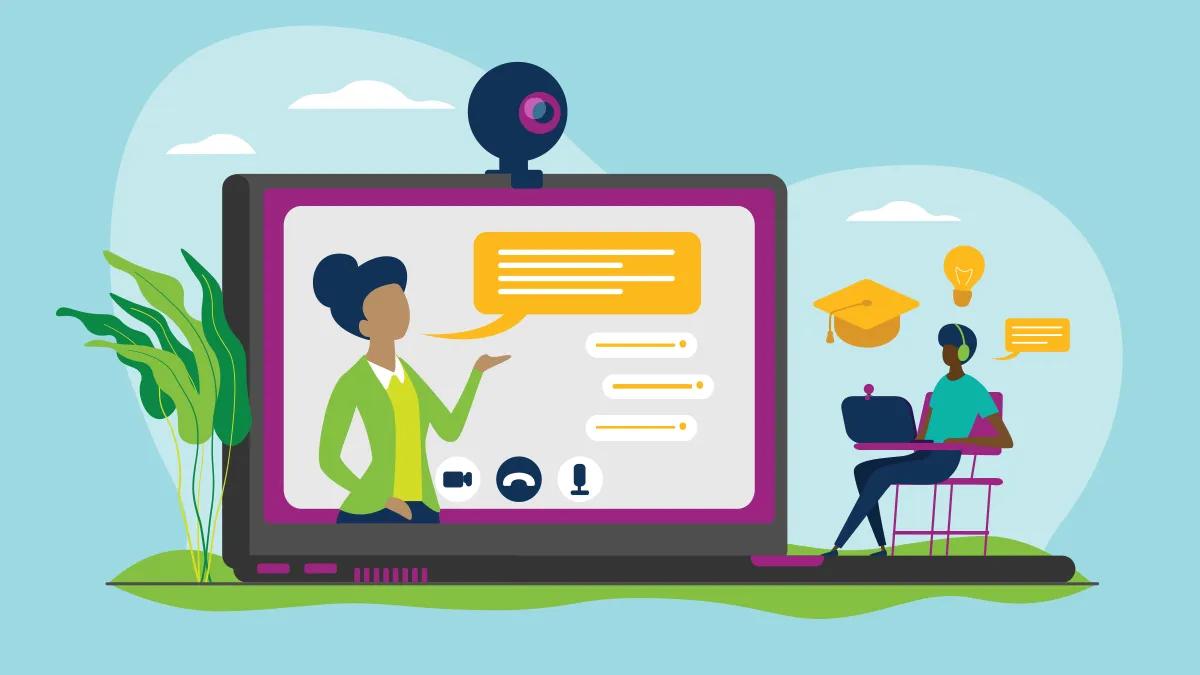As students returned to school this fall, educators grappled with the reality of a disrupted year and its lingering effect on learning. A study from consulting firm McKinsey & Company estimated that K-12 students were an average of five months behind in mathematics and four months behind in reading at the end of last academic year, with vulnerable students experiencing even wider deficits.
"COVID has exacerbated the situation across the board for students," said Christa Ehmann, vice president of Smarthinking, Pearson's online tutoring platform. "With such a significant impact on academic achievement, we are seeing a very strong focus on how to catch up learners and improve outcomes for all students."
Here are four realizations that will help guide administrators as they aim to bolster student performance.
Realization 1: Teachers can't do it alone
The responsibility for filling these gaps can't fall solely on overworked teachers. While they are the best people to identify the particular challenges various student groups face, Ehmann characterizes it as "an almost insurmountable obstacle" for them to address those myriad issues as they work to keep pace with the curriculum and milestones they need to hit.
That's why school districts should consider supplementary interventions outside the normal school day. One accessible option is online tutoring, which can be viewed as an extension of the classroom by providing a 24/7 human instructional safety net for students, Ehmann said: "When their parents are working and siblings or friends are otherwise occupied, it's important for students to have access to a network of additional one-to-one support to get assistance at the moment they need it so they can progress to the next step."
Realization 2: Families can't always help
Teachers often rely on caregivers to support their students at home, and having a partnership with families is key to learning success. Yet from a tactical perspective, those caregivers frequently deal with their own issues — many work extra hours to put food on the table or are consumed with responsibilities other than helping with homework.
This lack of availability is just one part of the equation, Ehmann said. Qualification is also an issue. Many parents can help with homework at lower levels, but as students progress, parents often can no longer tackle the increasingly complex math or literacy topics. "It quickly becomes evident that you need someone who is a trained professional educator serving in the role of tutor."
On a more philosophical level, Ehmann pointed out, the school has a commitment to developing their students into qualified, critically thinking individuals who will ultimately move into the workforce. "Particularly in light of the pandemic, there is an obligation for public schools to extend assistance to support the bigger picture of wanting our kids to be educated and contribute to society in meaningful and valuable ways."
Realization 3: High-quality tutors can fill the gap
Not all tutors are similarly equipped, and it's vital to vet a program to ensure it puts the capabilities of the tutor above all else. "Not to minimize the delivery mechanism, but you can have the best technology and marketing out there, but if the tutors are not well-trained educators who care about the students with whom they're working, the service is not going to be beneficial," Ehmann said.
First, the program should invest in rigorous screening and orientation to ensure tutors are prepared to work with students online. In addition, they should be educators equipped to help students learn, with the ultimate goal of the student being competent enough to operate independently and do the work on their own. "Tutors should be mentors and problem-based helpers who have a fundamental commitment to learning, versus just getting an answer," Ehmann said.
Training shouldn't stop once the tutors start their job. Ongoing professional development should be a priority for tutoring programs, Ehmann said, along with evaluation and oversight. She's seen many tutors appear to be fantastic upfront but go on to prove unskilled at engaging with students.
A diverse pool of tutors is also a key criterion because it allows the program to adapt to students who have a wide range of life experiences and learning styles and needs. "Tutors need to identify on an affective level with students, as well as cognitively," Ehmann said. "They should be flexible, with a breadth of experience, understanding and pedagogical approaches."
Finally, a program should prioritize security and transparency, Ehmann said. Smarthinking archives every interaction between student and tutor to provide a record for quality control and security, while complying with Family Educational Rights and Privacy Act guidelines and state parameters. It also helps from a learning perspective so students can look back on the notes or share them with their teachers.
Realization 4: Teachers are a key partner for successful tutoring
From Smarthinking's inception, Ehmann said, the company prioritized transparency to give teachers assurance in the abilities of the tutors as an extension of their classroom. Besides the transcript of the session that students can share with their teachers, tutors also code every interaction based on the level of engagement and mastery they perceived from the student. For example, they might have no concerns, or they might believe there is still confusion about the concept or even a lack of foundational content knowledge affecting their ability to progress.
The qualitative assessment is coded in a quantitative fashion and reported immediately back to the institution through a dashboard, which teachers can also use to refer a student who needs extra help. This two-way communication ensures teachers are still maintaining centralized control and oversight.
That concept of a partnership is most valuable to schools, Ehmann said. "From an equity perspective, fast, flexible online tutoring is a way to make learning accessible as another tool in a large tool kit of interventions that schools are employing as they work to improve student proficiency and confidence and fill the gaps that are so prevalent today."
Are you interested in learning more about online tutoring with Smarthinking? Contact Pearson today.










